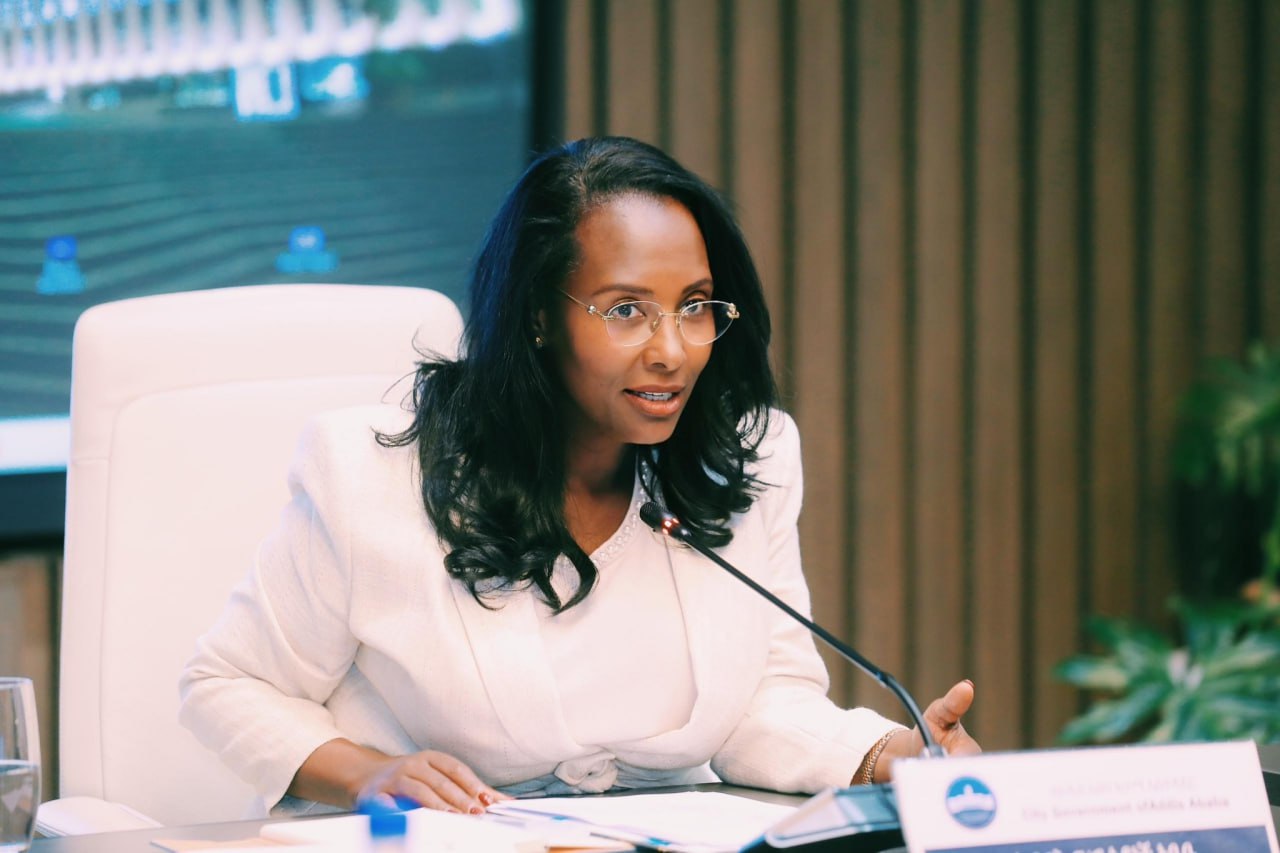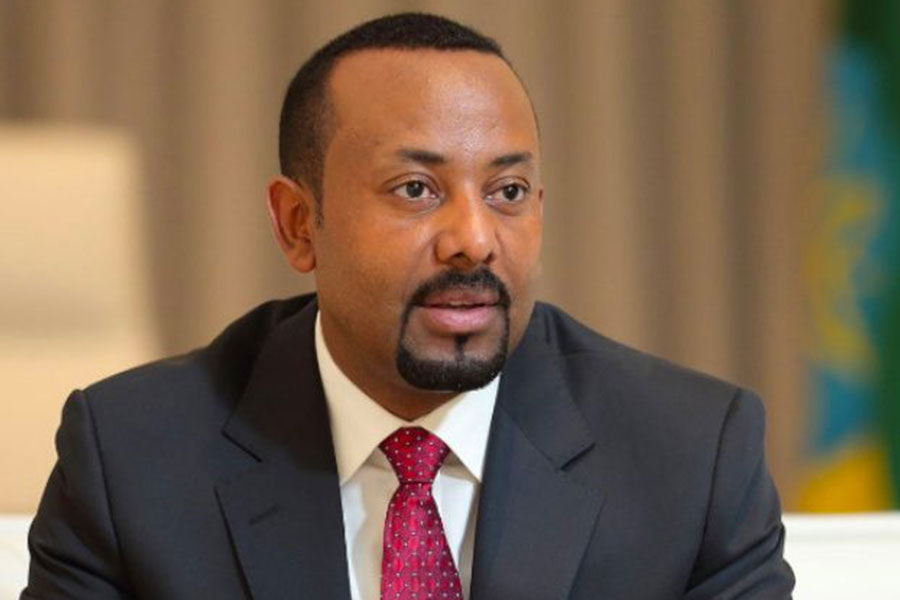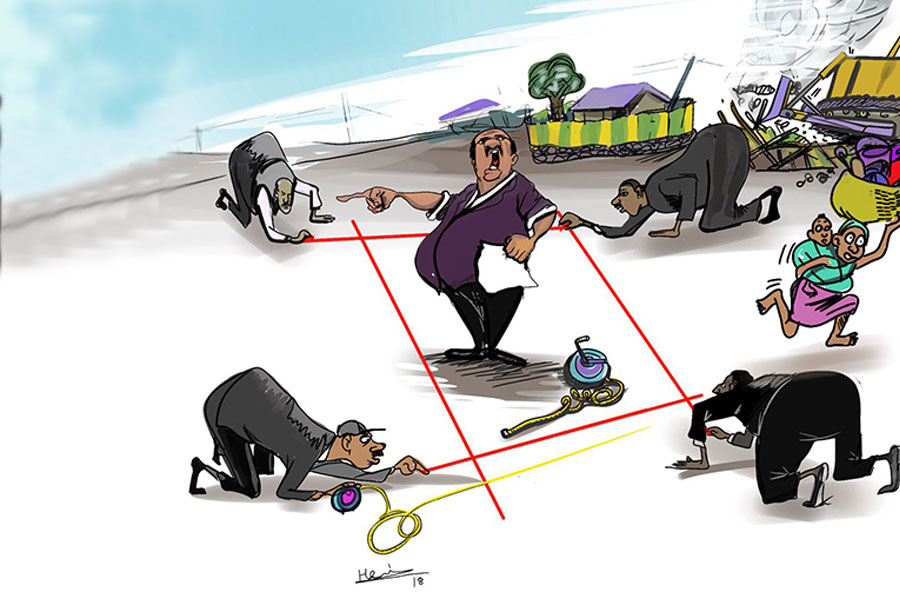
In-Picture | Aug 30,2025
The New Year air is supposed to be filled with a sense of renewal and continuity—a blend of the familiar and the evolving. This annual cycle, while a marker of time’s passage, also serves as a moment of reflection on the changes that have shaped our lives. It is a time when tradition meets transformation, where the old and the new coexist in a delicate balance.
In Addis Abeba, the skyline is rapidly evolving, with new buildings and infrastructure projects altering the topography almost daily. Streets like Africa Avenue (Bole Road) gleam with newly installed street and building lights while main roads are adorned with pedestrian and bike lanes. The expansion of these roads is part of the city’s broader push toward modernisation, to accommodate the ever-growing population and increasing traffic demands. However, other areas, particularly those with ongoing construction and unpaved roads, are faced with muddy chaos and occasional flooding, where cars seem to float like boats in a swollen river. The contrast between the modernised areas and those left behind is stark, reminding us that change, while inevitable, does not touch all places equally.
With the current rate of progress, the city will be unrecognisable to those who visit after years away. Even residents sometimes find it difficult to cope with the pace of change. There are instances where familiar landmarks disappear, replaced by new buildings or infrastructure projects. I recall confidently heading to a favourite restaurant, only to find it had been replaced by a new construction site. Such moments are jarring, serving as reminders that nothing in life is permanent, though it takes time to fully internalise this reality.
The constant transformation of the cityscape reflects the broader theme of the new year—an acknowledgement of time's passage and the changes it brings, both welcomed and lamented.
Amidst this urban transformation, the rituals in the weeks leading up to the holiday offer a comforting sense of continuity. The holiday coincides with the end of the rainy season and the beginning of the harvest. Fields are lush with greenery, and the air is filled with the fragrance of blooming flowers, particularly the iconic yellow daisies, Adey Abeba. This natural backdrop mirrors the spirit of hope and renewal that defines the new year.
For the younger generation, the season also marks a return to routine as schools reopen, and the streets become more congested. The rainy season, with its lighter traffic due to school closures, offers a brief respite. Children, free from the demands of school, find solace in the quiet of their homes or the chaos of neighbourhood play. Parents prepare their children for the new school year, shopping for supplies and uniforms, while the children themselves grapple with the mixed emotions of returning to the classroom.
This return to routine also highlights a growing trend among families—enrolling children in extracurricular activities that build discipline and character. Martial arts classes, in particular, have become popular, with young children donning their white uniforms and colourful belts, eager to learn the skills that will serve them in life. These activities, while modern in their approach, are deeply rooted in the traditional values of discipline, respect, and hard work. They represent a bridge between the old and the new, ensuring that while the city and its inhabitants may change, the core values that define the society remain.
New year is essentially brought forth with the cycle of time like any other day of the year. However, people still place great importance on it, even though, after a few weeks, it feels just like the previous years. It is, as the saying goes, the same old, same old. A year signifies the duration of one trip for our planet to orbit the sun, with the corresponding seasons behaving according to their proximity to the smiling sun.
The rural area remains relatively untouched by the rapid urbanisation seen in Addis Abeba, preserving the traditional rhythms of life that have been followed for generations. The harvest seasons are all dependent on the same physical and climatic characteristics as the journey. It is no wonder that in some cultures, the sun is honoured as a deity. The New Year, then, is not just a date on the calendar but a celebration of this cosmic dance, a reminder of our place in the grand scheme of things.
The Ethiopian calendar, with its unique structure, further emphasises this cyclical perspective. The last month, Pagumen, with its five or six days, depending on the leap year, is a time of reflection and preparation. It is a month that exists outside the regular flow of time, not included in budget cycles or financial obligations. During Pagumen, life takes on a slightly different pace, as people prepare for the upcoming year. It is a time for tying up loose ends, for making peace with the past year, and for setting intentions for the year to come.
Childhood during the rainy season feels endless and carefree, providing a necessary break from the stresses of school. Khaled Hosseini's "The Kite Runner," parallels Ethiopian school breaks during the rainy season. Like Ethiopians, Afghans also take school breaks in the coldest season. Hosseini notes that winter was beloved by children in Kabul, particularly for those whose families could afford a good iron stove, as schools were closed during this time.
New year is a time for celebration, but also for reflection—for looking back on the past year with gratitude and looking forward to the year ahead with hope.
Despite the rapid changes in the city, the essence of the new year remains the same. It is a time to reconnect with loved ones, enjoy the simple pleasures of life, and renew our commitment to the values that have guided us through the years. It is a reminder that life, in all its complexity, is worth celebrating. As we steer the challenges and uncertainties of the future, we do so with the knowledge that some things will remain constant.
Ultimately, the Ethiopian new year is a time of paradox—of change and continuity, of endings and beginnings. It reminds us that while the world around us may change, the core of our cultural identity remains steadfast. Time flies, whether we count it or not, and this will be the old year next year. Life’s cycles continue as usual, and change seems to be the only constant.
But what would life be without the nuances, like saying “Happy New Year,” or Enkuan Adersachehu in Amharic, and the reply, Enkuan Abro Adersen, which essentially means celebrating the gift of life and making it to another year?
It is a testament to the enduring spirit of the people—a spirit that, no matter how much the world around it changes, remains unbreakable.
PUBLISHED ON
Sep 08,2024 [ VOL
25 , NO
1271]


In-Picture | Aug 30,2025

Commentaries | Sep 08,2024

Advertorials | Sep 24,2024

Radar | Nov 24,2024

Viewpoints | Aug 13,2022

Viewpoints | Apr 28,2024

Radar | Jul 15,2023

Fortune News | Aug 17,2025

Radar | Jan 26,2019

Radar | Sep 05,2022

Dec 22 , 2024 . By TIZITA SHEWAFERAW
Charged with transforming colossal state-owned enterprises into modern and competitiv...

Aug 18 , 2024 . By AKSAH ITALO
Although predictable Yonas Zerihun's job in the ride-hailing service is not immune to...

Jul 28 , 2024 . By TIZITA SHEWAFERAW
Unhabitual, perhaps too many, Samuel Gebreyohannes, 38, used to occasionally enjoy a couple of beers at breakfast. However, he recently swit...

Jul 13 , 2024 . By AKSAH ITALO
Investors who rely on tractors, trucks, and field vehicles for commuting, transporting commodities, and f...

Oct 4 , 2025
Eyob Tekalegn (PhD) had been in the Governor's chair for only weeks when, on Septembe...

Sep 27 , 2025
Four years into an experiment with “shock therapy” in education, the national moo...

Sep 20 , 2025
Getachew Reda's return to the national stage was always going to stir attention. Once...

Sep 13 , 2025
At its launch in Nairobi two years ago, the Africa Climate Summit was billed as the f...